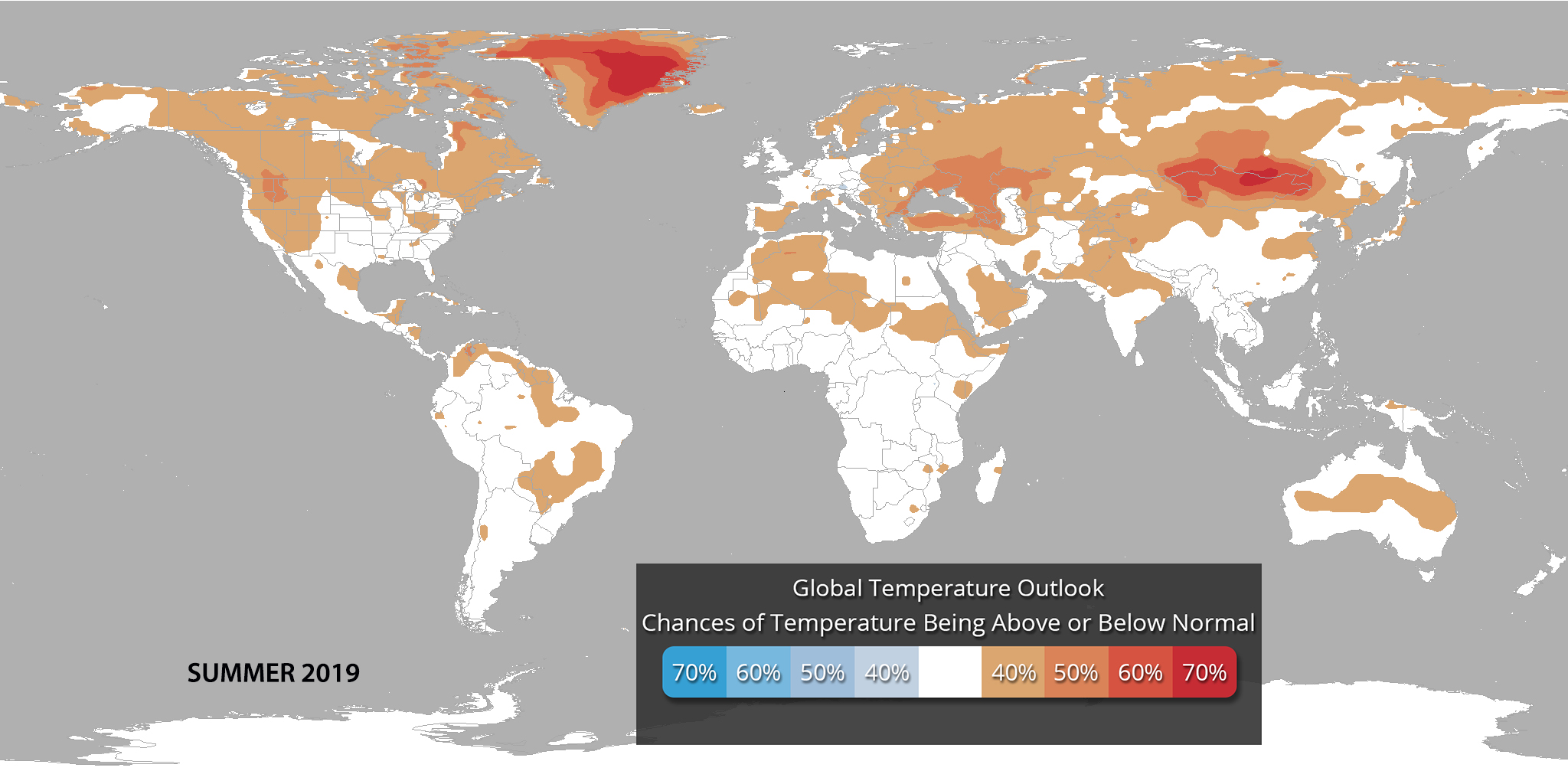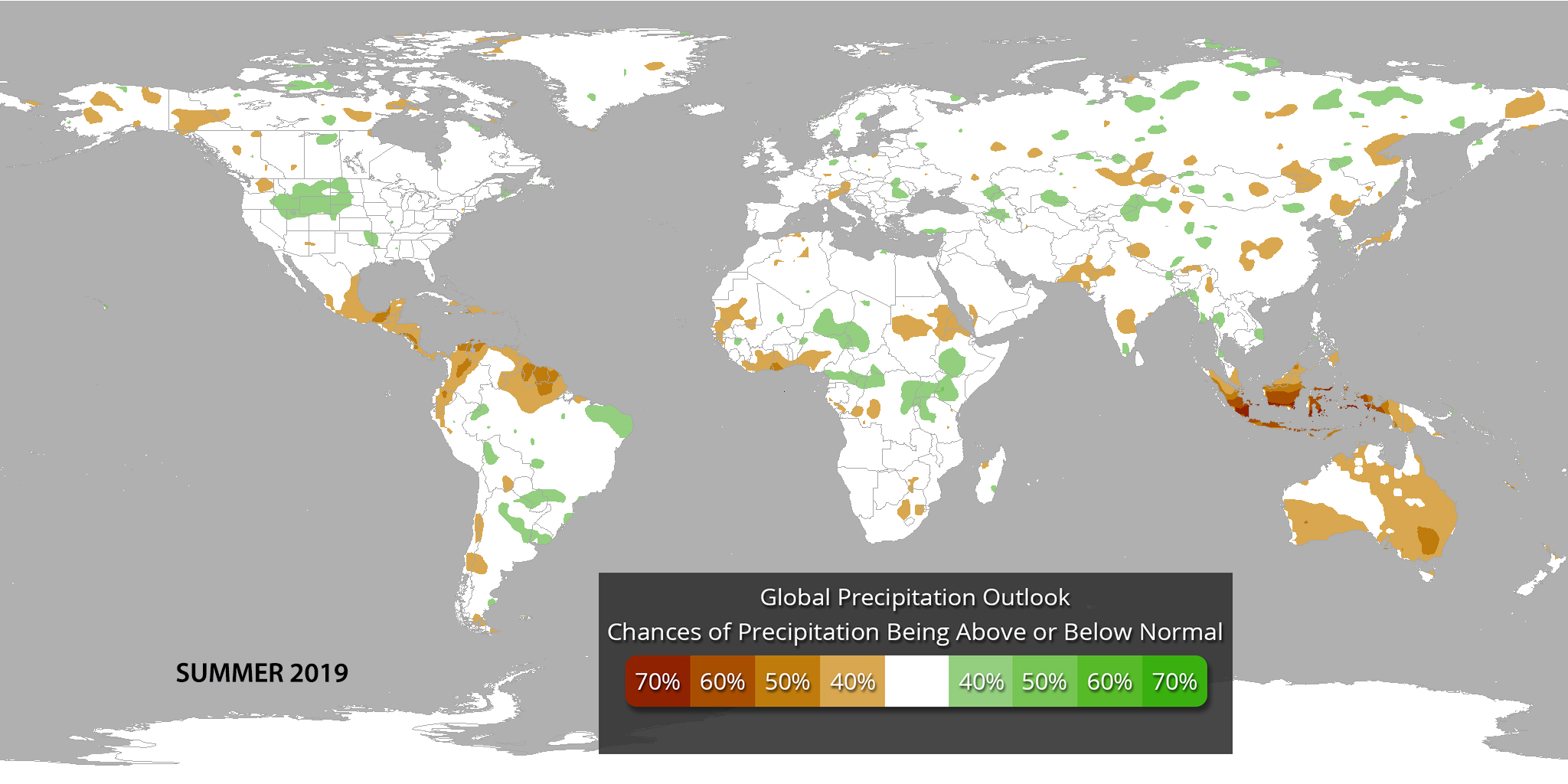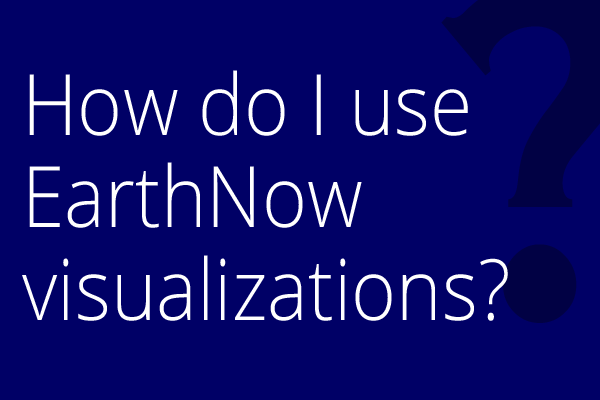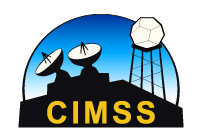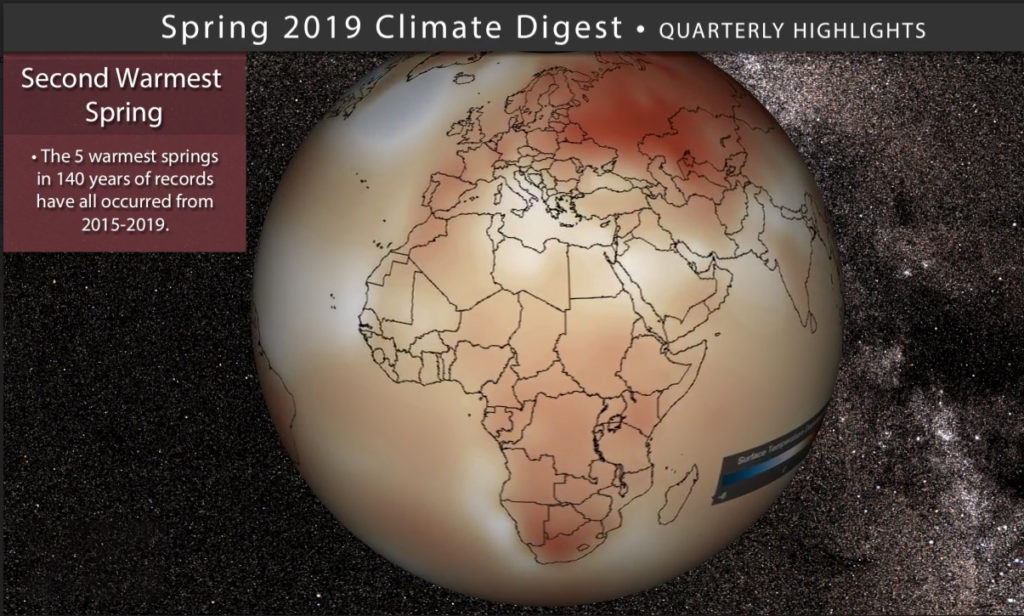 Spring 2019 was the second warmest March through May for the global land and ocean surfaces in the 140-year record coming in at 1.73°F (nearly a full degree Celsius) above the 20th century average.
Spring 2019 was the second warmest March through May for the global land and ocean surfaces in the 140-year record coming in at 1.73°F (nearly a full degree Celsius) above the 20th century average.
Of note: the five warmest March–May periods have all occurred since 2015.
The global land-only temperature for spring 2019 was also second highest on record.
In the continental United States meteorological spring had near-average temperatures. However, precipitation was nearly 2 inches above average making spring 2019 the sixth wettest on record. Kansas had its wettest spring on record and severe flooding occurred along several major rivers in the central United States. In fact, the 12-month period from June 2018 to May 2019 was the wettest on record for the United States with 37.68” of precipitation pushing the time period into a clear first place among all year-long totals going back to 1895.
Not surprisingly, most of the U.S. started the summer drought-free.
The quarterly climate digest, produced seasonally, consists of a short movie (4:47 minutes) made for Science On a Sphere® (SOS) and an MP4 video accessible through YouTube.
You can download the SOS content from this FTP Site.
Content includes:
– Global 3-month land temperatures
– 3-month Sea Surface Temperature (SST) anomalies
– Temperature and precipitation graphics for the U.S.
– Global temperature and precipitation outlooks for summer
References:
https://www.ncdc.noaa.gov/sotc/global/201905
https://www.ncdc.noaa.gov/sotc/national/201905
River flooding inundates the Northern Plains in spring 2019
Credits:
EarthNow Team
National Oceanic and Atmospheric Administration(NOAA)
Monthly state of the climate reports are available from NOAA National Centers for Environmental Information (NCEI) Climate Global Analysis and National Overview at https://www.ncdc.noaa.gov/sotc/




